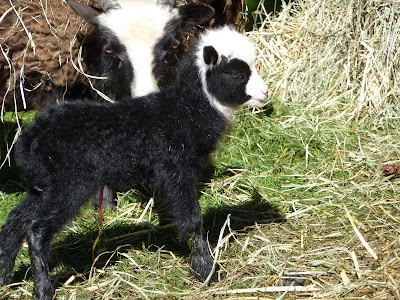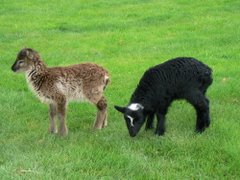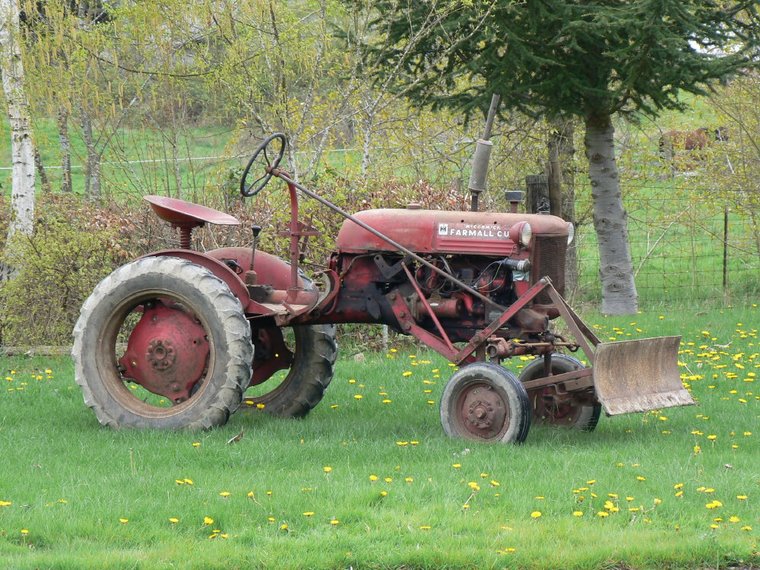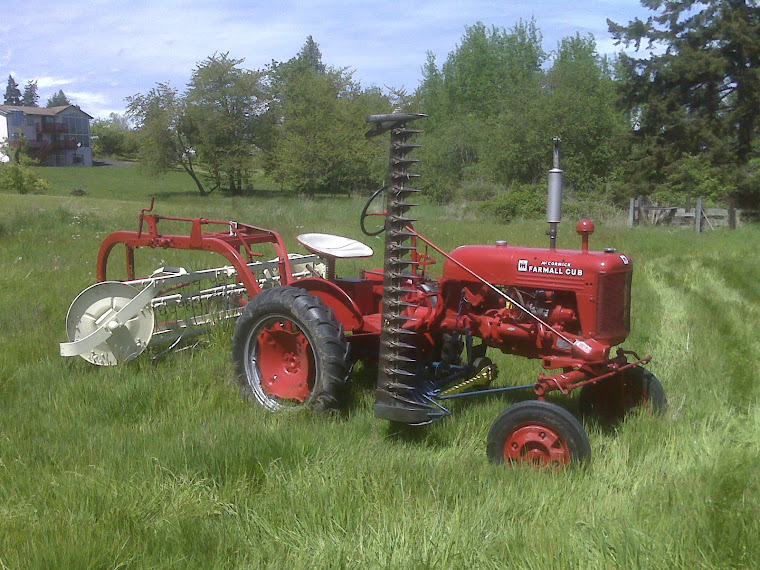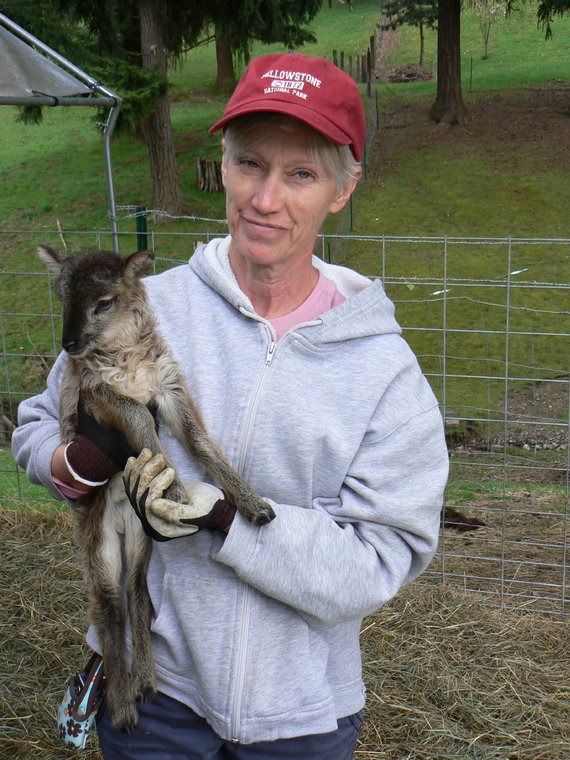Our scaled- back flock gave us a much more manageable crop of lambs this year. We ended up with ten lambs - 6 rams and 4 ewes. Only one set of twins, and quite a few ewes that did not lamb - both due to yearling ewes and yearling rams. A few high points with the lambs, but all In all not the results I had hoped for.
A brief recitation of our 2011 goals and results.
First, we did get the first two registrable full RBST (so-called "British") Soay lambs here at Woodland Creek. This group is actually testing my thinking on how extensive white spotting is inherited in Soay sheep. The ram, Saltmarsh Alston (RBST), has extensive white spotting.
Saltmarsh Alston
While none of the ewes he was mated with showed white spotting, I wanted to get some lambs carrying a copy of his white spotting (as well as producing our first RBST Soays here at WCF). Alston produced ewe lamb singles with our two RBST ewes, and a ram lamb with a 50% RBST ewe. Only one of the lambs had white spotting - and that only a tiny white wisp of white at her poll. Unfortunately this same ewe lamb later got her head stuck through the fence overnight and coyotes on the outside of the fence got her. (Ugh!).
It did demonstrate, however, that the dam carries a copy of white spotting gene, which had not yet shown up in any of her previous lambs. The dam is light phase, and so was the lamb, to my surprise, meaning that Alston also carries light phase (that is, he is BB/Bb).
Our second breeding group is the "Self-colored Light Phase", or SCLP group (the coat color that Kate Montgomery at Blue Mountain dubbed "chocolate"). Having one SCLP ram (Blue Mountain Express) and one SCLP ewe (Blue Mountain Cocoa) "assured" that we would have more SCLP lamb(s), however, for some reason Cocoa did not get pregnant. Both Express and Cocoa have produced offspring, so that's not the problem. It could be a size mis-match. Cocoa is quite large, and Express not.
Blue Mountain Express
![]()
He was also penned with "half-SCLP" ewes - ones that in prior years were produced by mating dark-self with light-wild. This HAS to produce offspring that look dark-self, but genetically are A+/Aa and BB/Bb, which then should have exactly 25% odds of each of the 4 possible genotypes when mated with Express as an SCLP ram (Aa/Aa, Bb/Bb, SS/S?). Mated with Woodland Creek Molly, a half-SCLP, she produced a dark-self ram lamb, "Mikey". A very nice ram lamb, but just a solid black with no spotting. He will be retained as a "backup" ram since he has to be Aa/Aa, BB/Bb, that is a "3/4 SCLP". An interesting ram lamb phenotype was produced with the dam Skylonda Imagine. She almost certainly does NOT carry self-colored gene, so the lamb HAD to be wild pattern, but also had to be light phase. The ram lamb, Ish, has such a faint wild pattern marking as to almost appear to be self-colored (but he's not). He too has to be "3/4 SCLP" (A+/Aa, Bb/Bb) and will also be retained both as backup and to see how his coat colors develop.
Woodland Creek Ish (Express X Imagine)
The other yearling ewe lambs from last year that were intentionally "3/4 SCLP", each of whom would have a 50% chance of producing SCLP with Express, were not large enough / mature enough to get pregnant, so no SCLP Soays produced this year at Woodland Creek.
The third (and final) breeding group was our "Black and Whites", or "B&W". That is, adding white spotting to dark-self. This year we took a step back in extending white spotting and instead chose a ram with less white, but better conformation. I am convinced that by too narrowly using closely related parents I had achieved pretty poor conformation, so wanted to diversify and improve that this year. The B&W used ram was Woodland Creek Lightning, who has a poll, forehead, and neck splash of white.
Woodland Creek Lightning '10 (Yosemite X Nisqually)
Lightning produced 4 lambs with 3 B&W ewes (one set of twins). Since all parents were Aa/Aa, BB/BB?, Ss/Ss, all offspring are also B&W. We had one nicely marked ram lamb, Rowdy.
Woodland Creek Rowdy '11 (Lightning X Raven)
The twin B&W lambs, a ram and a ewe, were both moderately marked with somewhat unusual smaller, dispersed bits of white around the poll, forehead, and neck. This is actually the "pattern" of white shown by the dam, Teed's Cinnamon.
Domino - ram and Caldera - ewe '11 (Lightning X Cinnamon)
All these B&W lambs had about the extent of white spotting that I expected / hoped for, but the last B&W lamb contradicted my theories. This ram lamb, born to our most extensively white-spotted ewe Athena, had only the tiniest of a white wisp at his poll. I guess this shows that the extent of white spotting is not exactly predictable or quantitative (and probably that my theory needs refinement(s)).
Ansel '11 (Lightning x Athena)
I'll close this posting with an overview of our assortment of mature rams, showing the diversity of genotypes and phenotypes we have in our flock.
Woodland Creek Farm Ram Assortment
Virtually every combination of Soay coat pattern, color phase, and white spotting is present somewhere in this photo! (Well not every combo, as that would be 2^3 = 8...but you get the idea).
